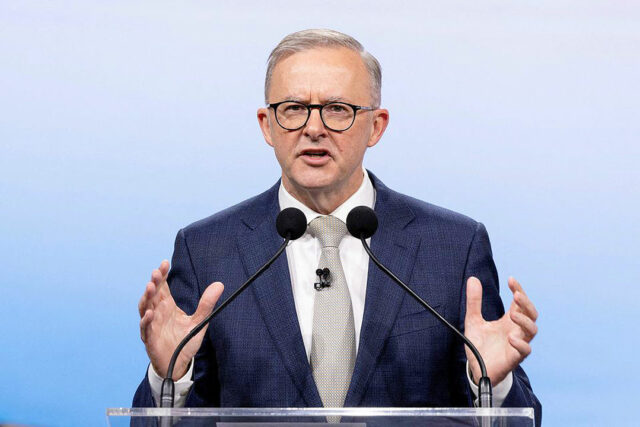Lazada sees ‘above average’ PHL growth in the region
SINGAPORE – E-commerce platform Lazada said that the Philippines is among its leading markets in Southeast Asia on the back of its improving internet penetration and consumer base.
“Among countries, the Philippines is already one of the leading ones, market-size wise. It’s above average, for sure. We have a very large population base here. Gross domestic product per capita growth is also high. Internet penetration is still growing. I think the growth speed-wise, it is slightly above average in Southeast Asia, for sure,” Lazada Group Chief Executive Officer (CEO) James Dong said in an interview on Wednesday.
Further, Mr. Dong said that Lazada holds a strong market position in the Philippines and the other countries where the platform is operating. He opted not to disclose specific figures on the company’s financial performance.
“At least in the region…, we are the number one or two player in all the markets that we operate in. We tend to keep that market position,” Mr. Dong said.
Separately, Lazada Philippines CEO Carlos Barrera said that there are opportunities for the company to grow, particularly in the logistics sector.
“We are in a position where we can continue to grow and invest and support the country. Obviously, we’re reaching some good critical sites,” he said, adding that there are “still so many opportunities to invest and to grow, specifically in the logistics domain.”
Mr. Barrera added that Lazada is continuing its efforts to expand the company’s reach in the Philippines.
“Both we and our partners are constantly expanding the coverage and the reach… Today, there are about 35 logistics companies in the country and more than 1,000 delivery hubs from different companies even in the remote locations,” Mr. Barrera said.
“Definitely, logistics is a big opportunity from first-mile delivery, middle-mile, to last-mile. It’s an industry that has been growing and will continue to grow,” he added.
Further, Mr. Barrera said that Lazada is aiming to make more affordable products available to Filipinos.
“The goal of this year is to have more frequent purchases and to provide more opportunities to capture more categories and more products from lower price points,” Mr. Barrera said.
“From a company perspective, improving loyalty retention, getting users to spend more time with us, is very, very important. Filipinos have traditionally been very loyal, but now after the pandemic, it’s important to continue improving this,” he added.
Meanwhile, Mr. Dong said that Lazada remains confident in terms of achieving growth in the region despite challenges such as the rising interest rate and inflationary pressures.
“I am confident because we did not pursue overly aggressive growth — which up until the first quarter of 2022, seems to be the direction and strategy for many players in the region,” Mr. Dong said during his keynote speech at the Lazada’s Brands Future Forum on Thursday.
“We are here for the long haul, to achieve sustainable, long-term growth… Our key mission is to build an engaging shopping platform that provides the best customer experience, with a clear differentiation tailored to each market,” he added.
Lazada, which is the Southeast Asian unit of Chinese e-commerce giant Alibaba Group, is targeting to serve 300 million shoppers by 2030 and to post $100 million in annual gross merchandise value.
Founded in 2012, Lazada has operations in six Southeast Asian countries including the Philippines, Indonesia, Malaysia, Singapore, Thailand, and Vietnam. The e-commerce platform currently has about 160 million active users and over one million active sellers every month.



















